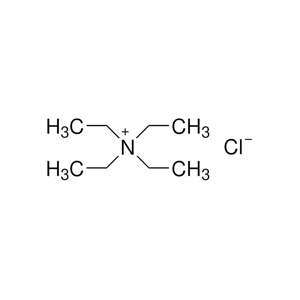Aure Chemical: Your Reliable Source for High-Purity Tetraethylammonium Chloride
Aure Chemical is a premier global supplier of high-quality Tetraethylammonium Chloride (TEAC), often simply referred to as TEACl. Identified by its CAS number 56-34-8, TEAC is a versatile quaternary ammonium salt available as a white crystalline solid or in solution. Renowned for its high solubility in various solvents and its stability, TEAC serves as an indispensable reagent across a multitude of scientific and industrial applications. It is predominantly utilized as a supporting electrolyte in advanced electrochemical systems, playing a vital role in research and development. Furthermore, TEAC functions as an effective phase-transfer catalyst (PTC), significantly improving reaction kinetics and yields in complex organic syntheses. Its applications extend into pharmaceutical research, particularly in neurobiology where the tetraethylammonium ion is studied for its effects on ion channels. Aure Chemical is committed to providing Tetraethylammonium Chloride that meets stringent purity and performance requirements, ensuring consistent and reliable results for your most demanding applications. Partner with us for a dependable supply of this essential chemical.
Basic Information of Tetraethylammonium Chloride
Tetraethylammonium Chloride (TEAC, CAS No. 56-34-8) is meticulously produced and rigorously tested to meet stringent quality standards. We offer various grades to suit your specific application requirements:
| CAS No.: | 56-34-8 |
|---|
| EC No.: | 200-267-5 |
|---|
| Linear Formula: | C₈H₂₀ClN |
|---|
| Molecular Weight: | 165.7 |
|---|
| Appearance: | White crystalline powder. |
|---|
| Odor: | |
|---|
| Melting Point: | 3282–290 °C |
|---|
| Boiling Point: | 273.32°C (rough estimate) |
|---|
| Density: | 1.08 |
|---|
| Solubility: | Highly soluble in water, ethanol, chloroform, and other polar organic solvents. |
|---|
| Stability: | Stable under normal conditions; hygroscopic. |
|---|
| Purity: | Available in high-purity grades for sensitive electrochemical and biological applications. |
|---|
| Purity: | |
|---|
| Chemical Structure: |  |
|---|
Our commitment to delivering high-purity TEAC ensures a reliable and efficient component for your critical processes, offering consistent quality for diverse synthetic, analytical, and research applications.
Primary Applications of Tetraethylammonium Chloride (TEAC)
Tetraethylammonium Chloride's unique properties as a stable, highly soluble quaternary ammonium salt make it a valuable reagent with significant applications in various fields:
Supporting Electrolyte in Electrochemistry:
TEAC is widely employed as a supporting electrolyte in various electrochemical techniques, including voltammetry, potentiometry, and electrodeposition. Its high conductivity and stability, particularly in non-aqueous solvent systems, make it an ideal choice for facilitating charge transfer in electrochemical studies and synthetic reactions.
Phase-Transfer Catalyst (PTC) in Organic Synthesis:
TEAC acts as an effective phase-transfer catalyst, facilitating chemical reactions between reactants located in different, immiscible phases (e.g., aqueous and organic). It helps to transfer anionic species across phase boundaries, thereby accelerating reaction rates and improving yields in numerous organic transformations, such as alkylations, oxidations, and substitutions.
Pharmaceutical and Agrochemical Research:
It serves as a key intermediate or reagent in the synthesis of various pharmaceuticals and agrochemicals, where the tetraethylammonium moiety might be incorporated into the active compound or its catalytic properties are utilized for specific synthetic steps.
Neurobiology and Ion Channel Research:
In biological and neuroscientific research, the tetraethylammonium cation is a well-known potassium channel blocker. It is extensively used as a pharmacological tool to study the function and mechanisms of potassium ion channels in nerve and muscle cells.
Ion Pairing Agent in Chromatography:
In analytical chemistry, particularly in ion-pair liquid chromatography (IP-LC), TEAC is used as an ion pairing agent to improve the separation efficiency and detection of ionic and ionizable compounds.
Polymer and Material Science:
TEAC can be utilized as a reagent or additive in certain polymerization reactions or in the synthesis of novel materials, influencing reaction kinetics or modifying material properties.
Why Choose Aure Chemical for Your Tetraethylammonium Chloride (TEAC) Supply?
Aure Chemical is dedicated to providing superior chemical solutions and unparalleled customer support. By partnering with us for your TEAC requirements, you benefit from:
Exceptional Purity & Consistent Quality: Our Tetraethylammonium Chloride is manufactured to stringent purity specifications, crucial for achieving optimal and reproducible results in sensitive electrochemical experiments, pharmaceutical synthesis, and biological research.
Reliable Global Supply Chain: We maintain a robust and efficient global supply network, guaranteeing timely and secure delivery of this essential chemical to your facilities worldwide, with flexible packaging options to meet your specific needs.
Expert Technical Support: Our dedicated team of specialists is readily available to offer comprehensive guidance on product application, safe handling, optimal storage, and usage in your specific chemical processes, ensuring safety and efficiency.
Commitment to Quality & Responsible Stewardship: We adhere to the highest industry standards for quality management, environmental responsibility, and product stewardship across all our operations, ensuring peace of mind for our clients and sustainable sourcing practices.
Customized Solutions: We understand that different applications may require specific purity levels or formulations. We are open to discussing customized solutions to meet your exact requirements.
Choose Aure Chemical for a trustworthy and dependable supply of high-quality Tetraethylammonium Chloride (TEAC). We're ready to support your advanced chemical synthesis, electrochemical, and research endeavors with an unwavering commitment to quality and excellence.

